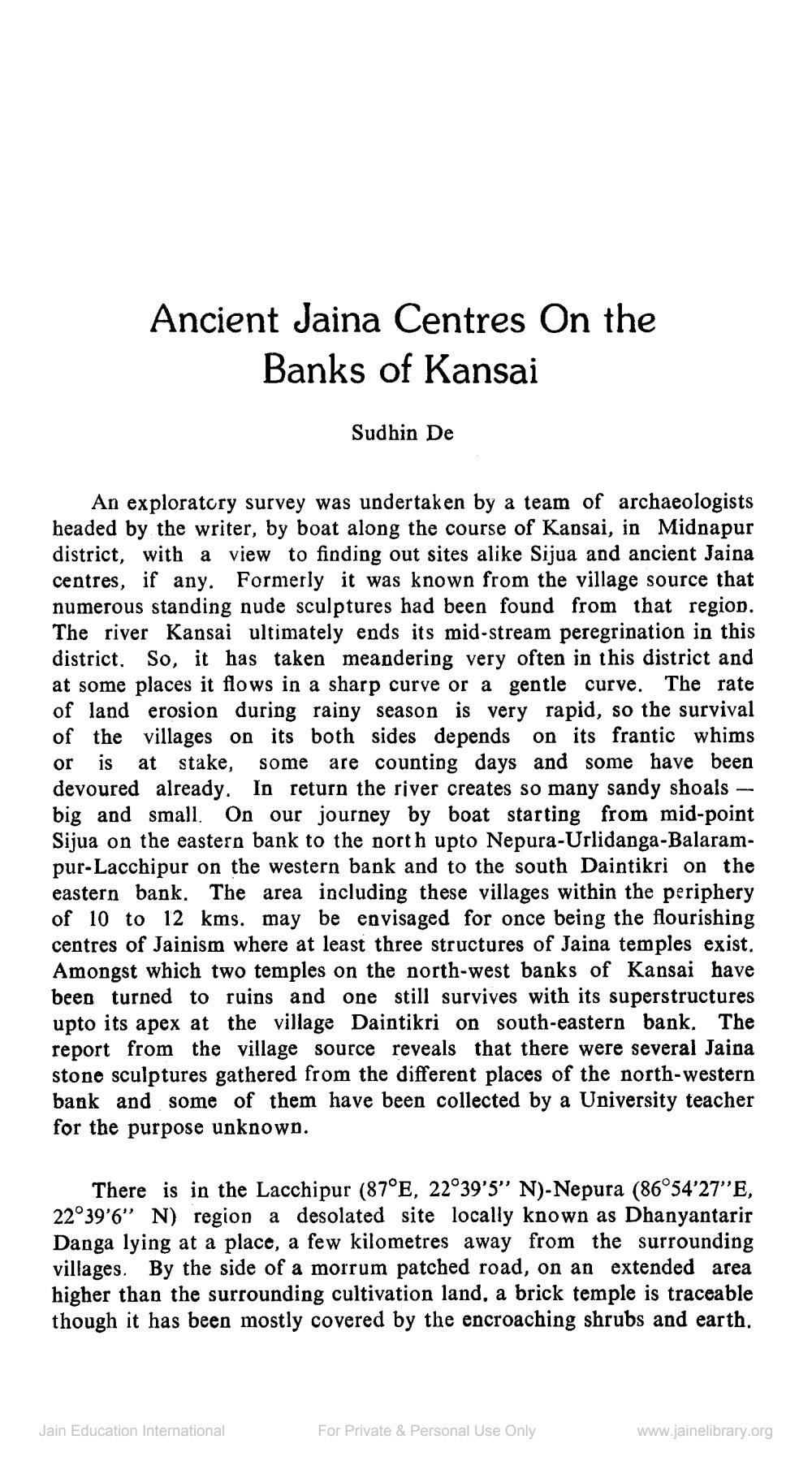________________
Ancient Jaina Centres On the
Banks of Kansai
Sudhin De
An exploratory survey was undertaken by a team of archaeologists headed by the writer, by boat along the course of Kansai, in Midnapur district, with a view to finding out sites alike Sijua and ancient Jaina centres, if any. Formerly it was known from the village source that numerous standing nude sculptures had been found from that region. The river Kansai ultimately ends its mid-stream peregrination in this district. So, it has taken meandering very often in this district and at some places it flows in a sharp curve or a gentle curve. The rate of land erosion during rainy season is very rapid, so the survival of the villages on its both sides depends on its frantic whims or is at stake, some are counting days and some have been devoured already. In return the river creates so many sandy shoals - big and small. On our journey by boat starting from mid-point Sijua on the eastern bank to the north upto Nepura-Urlidanga-Balarampur-Lacchipur on the western bank and to the south Daintikri on the eastern bank. The area including these villages within the periphery of 10 to 12 kms. may be envisaged for once being the flourishing centres of Jainism where at least three structures of Jaina temples exist. Amongst which two temples on the north-west banks of Kansai have been turned to ruins and one still survives with its superstructures upto its apex at the village Daintikri on south-eastern bank. The report from the village source reveals that there were several Jaina stone sculptures gathered from the different places of the north-western bank and some of them have been collected by a University teacher for the purpose unknown.
There is in the Lacchipur (87°E, 22°39'5" N)-Nepura (86°54'27''E, 22°39'6" N) region a desolated site locally known as Dhanyantarir Danga lying at a place, a few kilometres away from the surrounding villages. By the side of a morrum patched road, on an extended area higher than the surrounding cultivation land, a brick temple is traceable though it has been mostly covered by the encroaching shrubs and earth.
Jain Education International
For Private & Personal Use Only
www.jainelibrary.org




